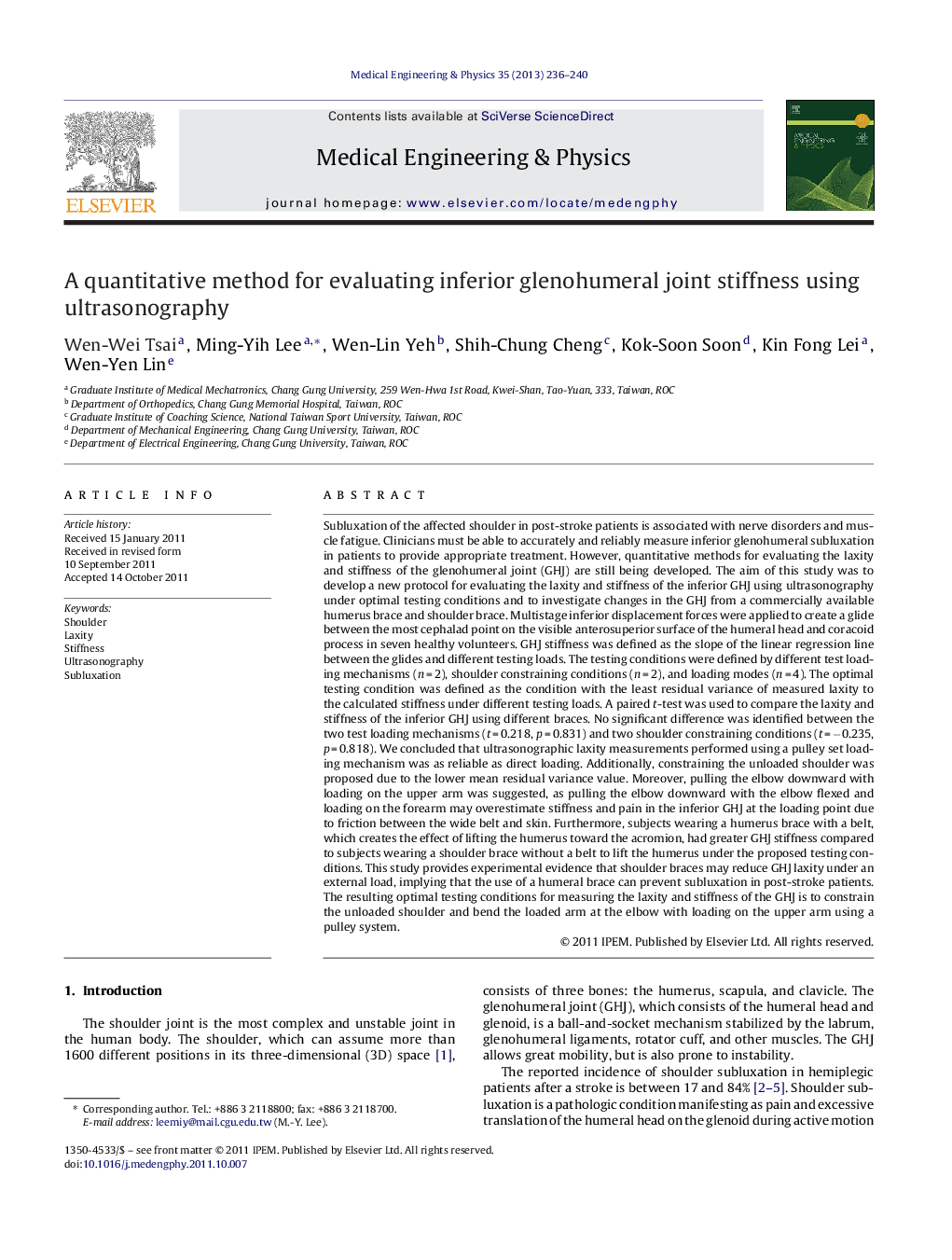| کد مقاله | کد نشریه | سال انتشار | مقاله انگلیسی | نسخه تمام متن |
|---|---|---|---|---|
| 876250 | 910831 | 2013 | 5 صفحه PDF | دانلود رایگان |

Subluxation of the affected shoulder in post-stroke patients is associated with nerve disorders and muscle fatigue. Clinicians must be able to accurately and reliably measure inferior glenohumeral subluxation in patients to provide appropriate treatment. However, quantitative methods for evaluating the laxity and stiffness of the glenohumeral joint (GHJ) are still being developed. The aim of this study was to develop a new protocol for evaluating the laxity and stiffness of the inferior GHJ using ultrasonography under optimal testing conditions and to investigate changes in the GHJ from a commercially available humerus brace and shoulder brace. Multistage inferior displacement forces were applied to create a glide between the most cephalad point on the visible anterosuperior surface of the humeral head and coracoid process in seven healthy volunteers. GHJ stiffness was defined as the slope of the linear regression line between the glides and different testing loads. The testing conditions were defined by different test loading mechanisms (n = 2), shoulder constraining conditions (n = 2), and loading modes (n = 4). The optimal testing condition was defined as the condition with the least residual variance of measured laxity to the calculated stiffness under different testing loads. A paired t-test was used to compare the laxity and stiffness of the inferior GHJ using different braces. No significant difference was identified between the two test loading mechanisms (t = 0.218, p = 0.831) and two shoulder constraining conditions (t = −0.235, p = 0.818). We concluded that ultrasonographic laxity measurements performed using a pulley set loading mechanism was as reliable as direct loading. Additionally, constraining the unloaded shoulder was proposed due to the lower mean residual variance value. Moreover, pulling the elbow downward with loading on the upper arm was suggested, as pulling the elbow downward with the elbow flexed and loading on the forearm may overestimate stiffness and pain in the inferior GHJ at the loading point due to friction between the wide belt and skin. Furthermore, subjects wearing a humerus brace with a belt, which creates the effect of lifting the humerus toward the acromion, had greater GHJ stiffness compared to subjects wearing a shoulder brace without a belt to lift the humerus under the proposed testing conditions. This study provides experimental evidence that shoulder braces may reduce GHJ laxity under an external load, implying that the use of a humeral brace can prevent subluxation in post-stroke patients. The resulting optimal testing conditions for measuring the laxity and stiffness of the GHJ is to constrain the unloaded shoulder and bend the loaded arm at the elbow with loading on the upper arm using a pulley system.
Journal: Medical Engineering & Physics - Volume 35, Issue 2, February 2013, Pages 236–240